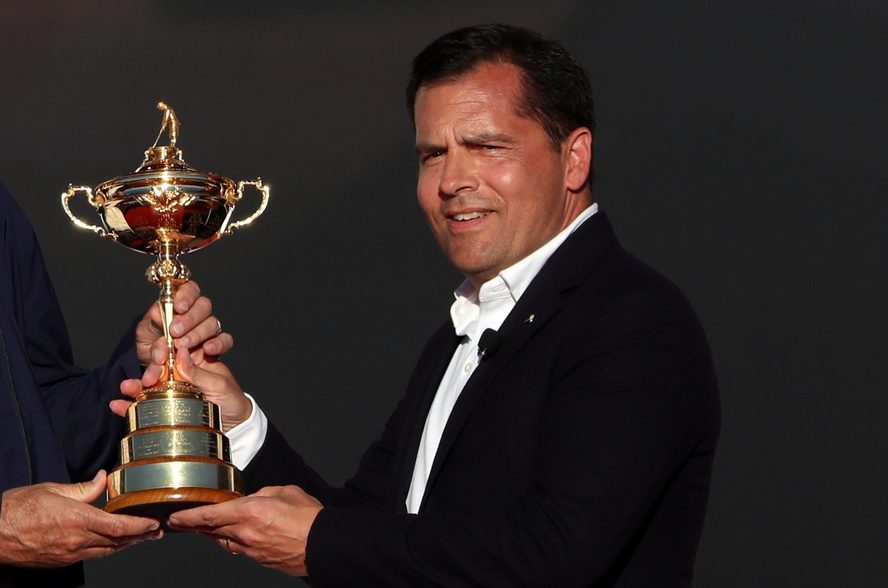When the LIV defection saga began, it was the veteran names — Phil Mickelson, Dustin Johnson, Sergio Garcia — who shocked the sport with their departures from the PGA Tour.
Now, a different type of player is defecting to the Saudi-backed golf venture — which could spell trouble for the Tour.
Over the weekend, Matthew Wolff and amateur Eugenio Chacarra announced they will join LIV Golf and play the series’ first U.S. event in Portland, Oregon, this Thursday to Saturday.
Wolff, 23, and Chacarra, 22, could represent a potential revolution in the professional golf pipeline and how younger players approach breaking in.
“The young, promising players are the ones that [LIV] is very intriguing to, because it maybe sets them up for life when they otherwise would’ve had to hope that they could earn that,” says Vince Gennaro, the Associate Dean of NYU’s Preston Robert Tisch Institute for Global Sport.
These upstarts are in a truly unique position: They haven’t fully established themselves in the pro game but possess tremendous talent to win tournaments.
Wolff burst onto the scene in 2019, becoming the first golfer since Tiger Woods to win an NCAA title (at Oklahoma State) and a PGA Tour event (3M Open) in the same calendar year. His 2020 was even more impressive.
- He tied for fourth at the PGA Championship — his first major appearance.
- He then took a lead into Sunday at the U.S. Open, eventually claiming runner-up to fellow LIV defector Bryson DeChambeau.
- Wolff achieved a career-best No. 12 OWGR ranking that year.
Since then, he has failed to record another win and missed the cut in seven of his last 12 Tour starts. His world ranking stands at No. 77.
LIV could give him a fresh start and change the entire course of his career.
“If he’s getting X-million dollars over the three or five years, that alone could rival what he would make on the PGA tour,” Gennaro says. “Then you add to that the winnings that he could pocket, and it’s really a whole different thing for him.”
In 65 career events over four years, Wolff has earned $7.6 million. He’d earn over half of that with a single LIV victory against a significantly smaller field.
- The PGA Tour’s John Deere Classic this week has a field of more than 100 players.
- The total purse is $7.1 million and the winner’s prize is $1.3 million.
- LIV’s inaugural London event had a field of 48.
- The weekly individual purse is $20 million and the winner’s prize is $4 million.
LIV’s unique scheduling format could also limit the burnout that can especially affect young, slumping players.
“When you’re not playing well, you miss a couple cuts in a row, and you’re on that third week already committed to play… you’re like, ‘Gosh, it’d be nice to go home for a week and reset,’” Wolff said during his first LIV press conference Tuesday. “I think this gives you the opportunity to do that.”
“This is an opportunity to really reorient completely how he looks at the game of golf,” says Gennaro.
Chacarra, on the other hand, has an almost completely clean slate in front of him.
The fellow OSU product is the No. 2-ranked amateur in the world and recently tied for second in the individual NCAA Division I men’s golf championship.
That he’s willing to go pro in the nascent golf league could set a massive precedent for other amateurs.
“It could be a faster track to professional golf at the highest level,” says Gennaro, noting the loose definition of “highest level” for LIV. “Less tolls to pass through, it seems, than the PGA tour has.”
It could also be an easier track to make money than toiling in the lower levels of the Tour might require.
“What LIV’s coming in and doing is providing a platform for somebody to do what they would’ve liked to have done on the PGA Tour: play 10 events a year, plus the majors, and make a tremendous living doing it,” Gennaro says.
If successful at LIV, the two budding stars could massively disrupt the monopoly the PGA Tour has held on young players for decades.

















